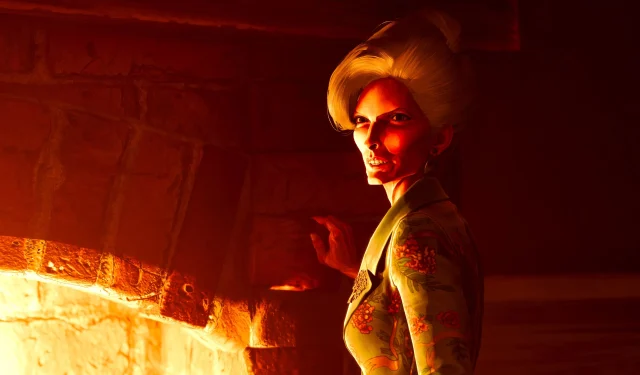South of Midnight embarks on a heart-wrenching odyssey alongside Hazel, who is determined to locate her mother after a catastrophic hurricane inundates their home. This narrative, however, transcends a simple rescue mission and unfolds into an intricate tapestry of vignettes, rich with emotional depth. Developed by Compulsion Games, this Southern Gothic adventure artfully explores the complexities of grief and the sometimes murky history of the American Deep South. As the story culminates, it delivers a conclusion that is both nuanced and unsettling.
[Warning: Major spoilers for South of Midnight.]
As Hazel navigates her journey, she ultimately finds herself in the mystical Town on the Tapestry, an ethereal realm governed by Kooshma, the King of Dreams and Nightmares. This place ensnares souls, trapping them in a limbo of eternal longing. Hazel stumbles upon Kooshma’s Cabaret and teams up with Roux for a dance, eventually encountering her mother, who is caught in a haunting vision of Hazel’s own demise amid the flood.
Hazel Saves Her Mother From Kooshma
Escaping The Town On The Tapestry
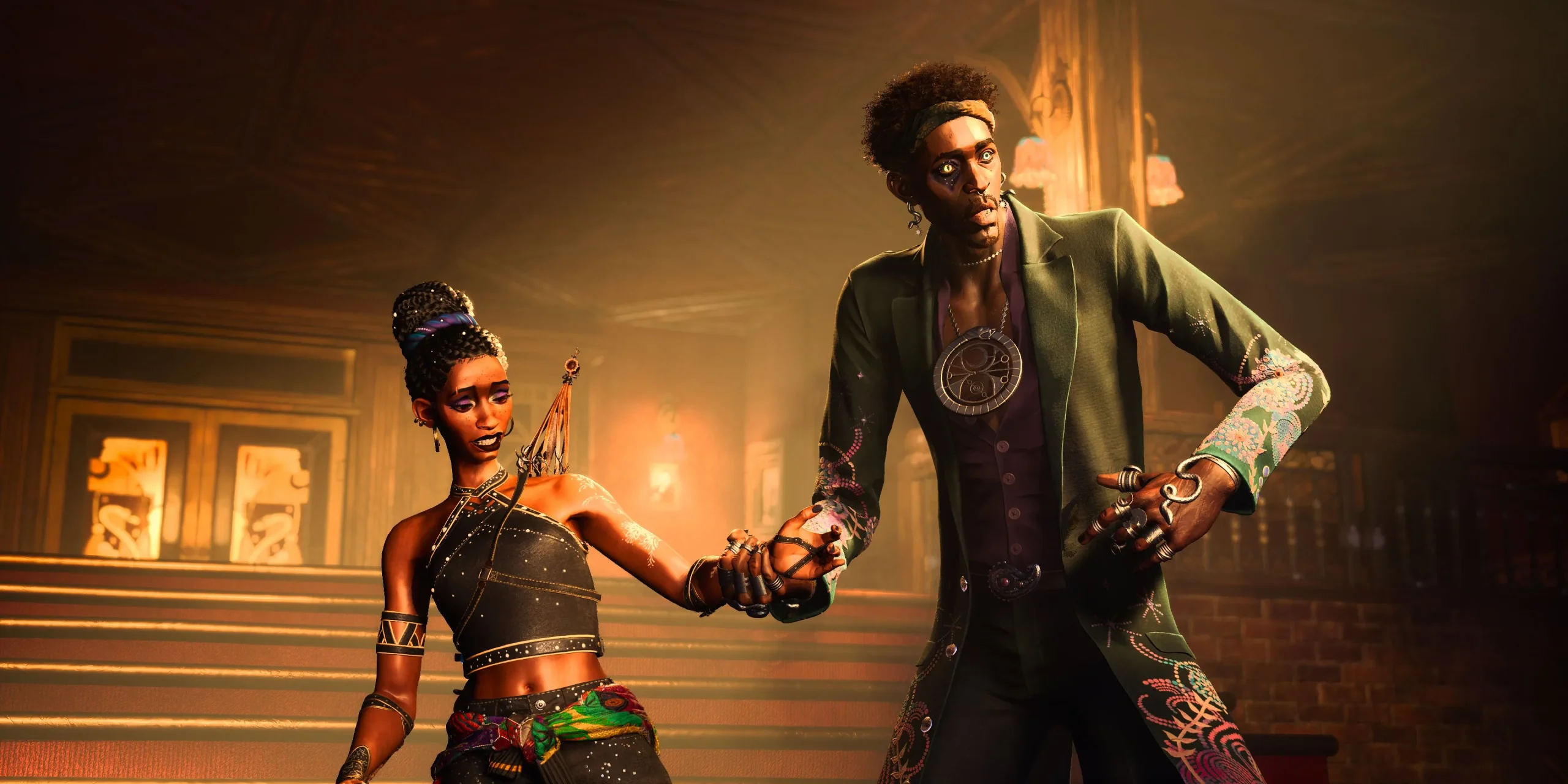
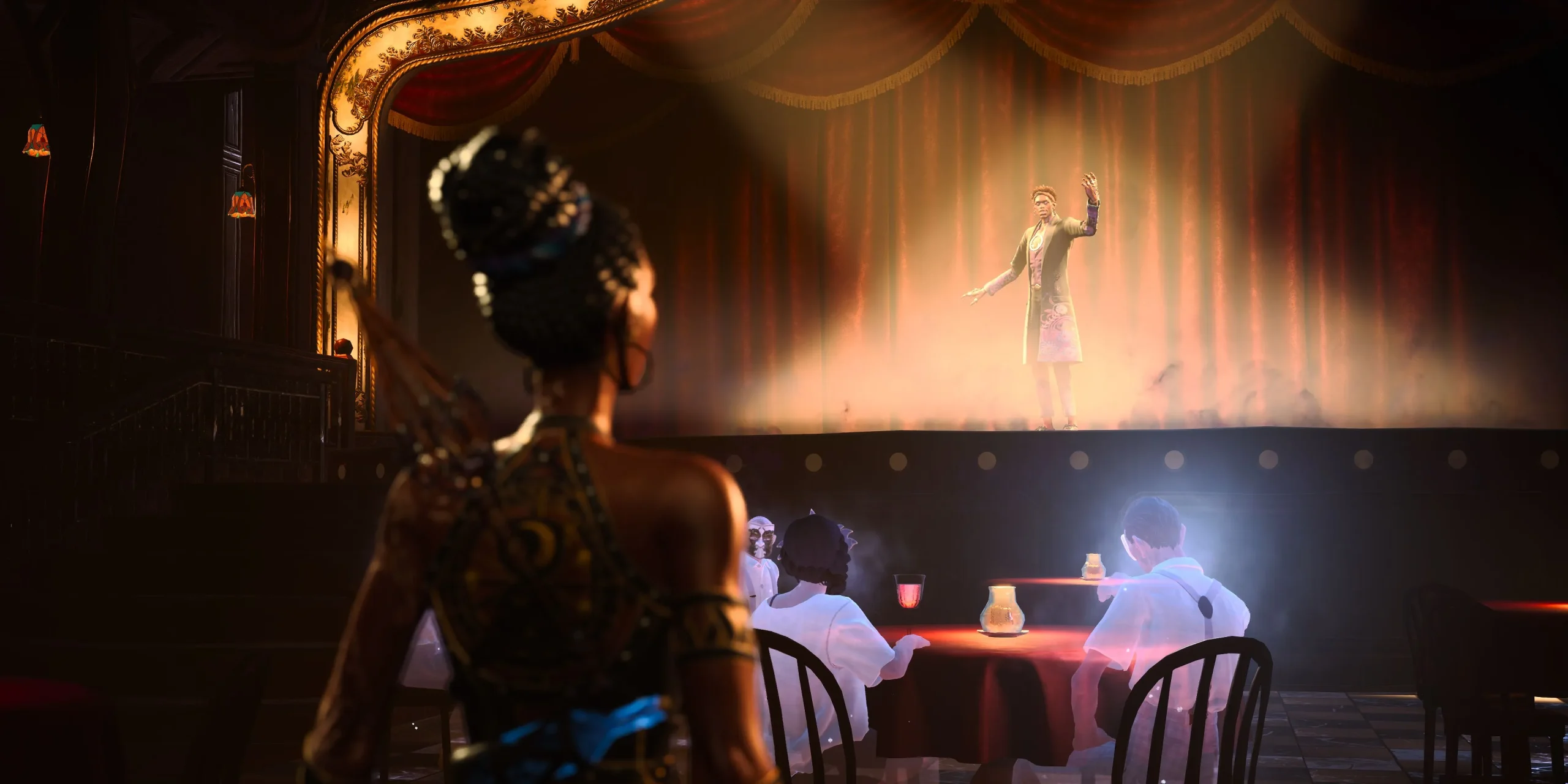
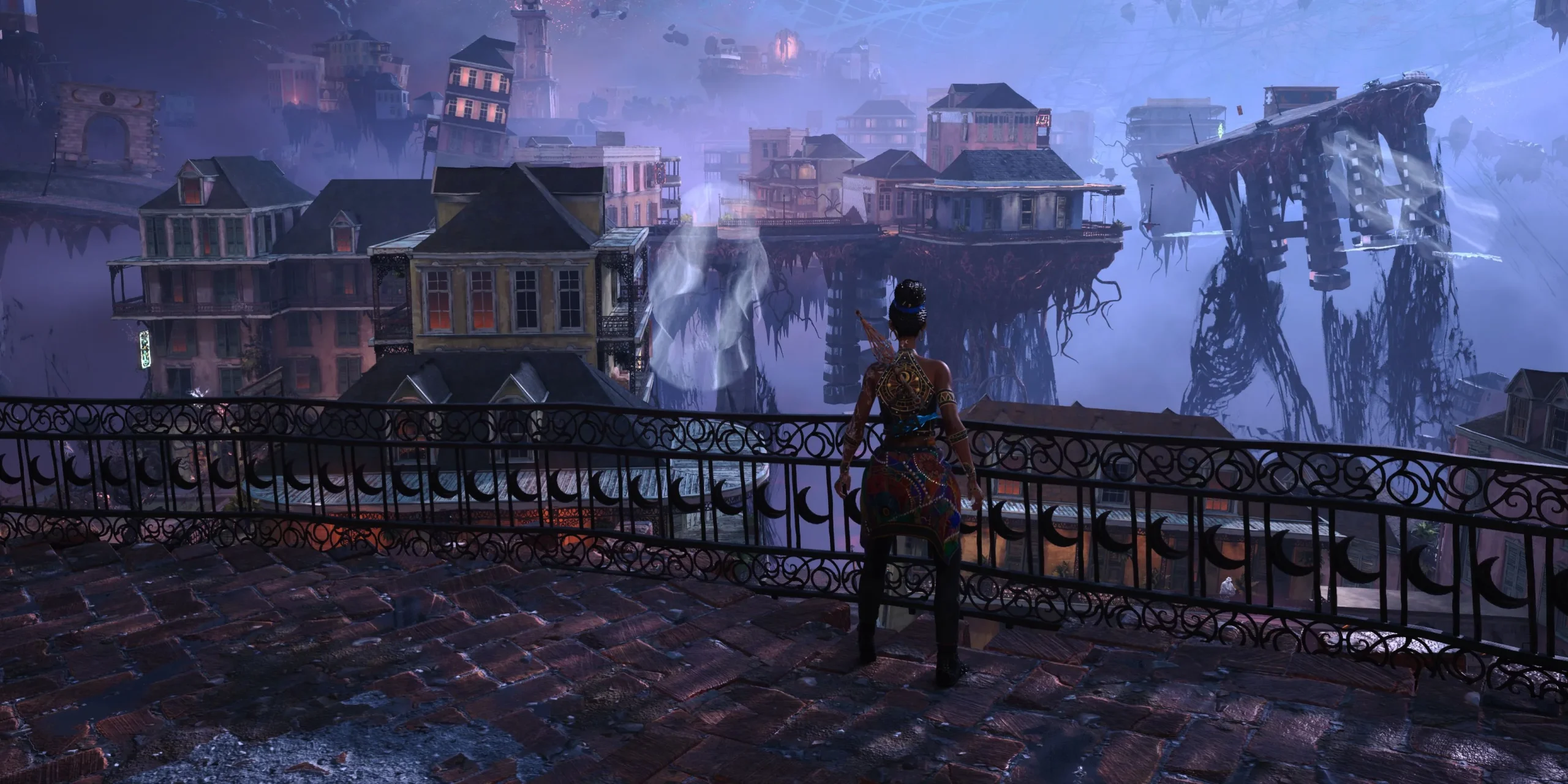
With Roux facilitating Hazel’s search for Lacey, the stakes are heightened as Roux hints at ulterior motives beneath his assistance. Hazel must confront Kooshma directly to rescue her mother from the unnerving trance where she relives the moment Hazel plunged into the floodwaters in a desperate attempt to save her. Though her mother remains unaware, Hazel was pulled from the currents by her emerging powers.
After a brief yet emotional reunion, Hazel gives Lacey the magic bottle, propelling the fight against Kooshma into full swing. As Hazel confronts a barrage of Haints and dodges Kooshma’s relentless onslaught, she unravels Stigma—a manifestation of the hardships she has been working to untangle throughout her adventure. As Hazel dispels Stigma, it collects within the magic bottle in Lacey’s hands, which Hazel intends to deposit in a sacred bottle tree. However, trapping Kooshma within a bottle tree proves to be an impossible task, given his divine nature.
In a twist of fate, Roux appears once more, assuring Hazel of Lacey’s safety back in Prospero while hinting at the terms of their deal. “A favor for a key,”he reminds her, referring to the task of delivering a hairbrush to Hazel’s grandmother, Bunny. The significance of this hairbrush will only become evident in the final chapters of South of Midnight as Roux elaborates on Bunny’s identity as a “False Stitcher,”a distinction that underscores her failure to be a true Weaver.
Hazel Confronts Her Grandmother & Gives Bunny The Hairbrush
Bunny Chooses A False Reality With Her Daughter
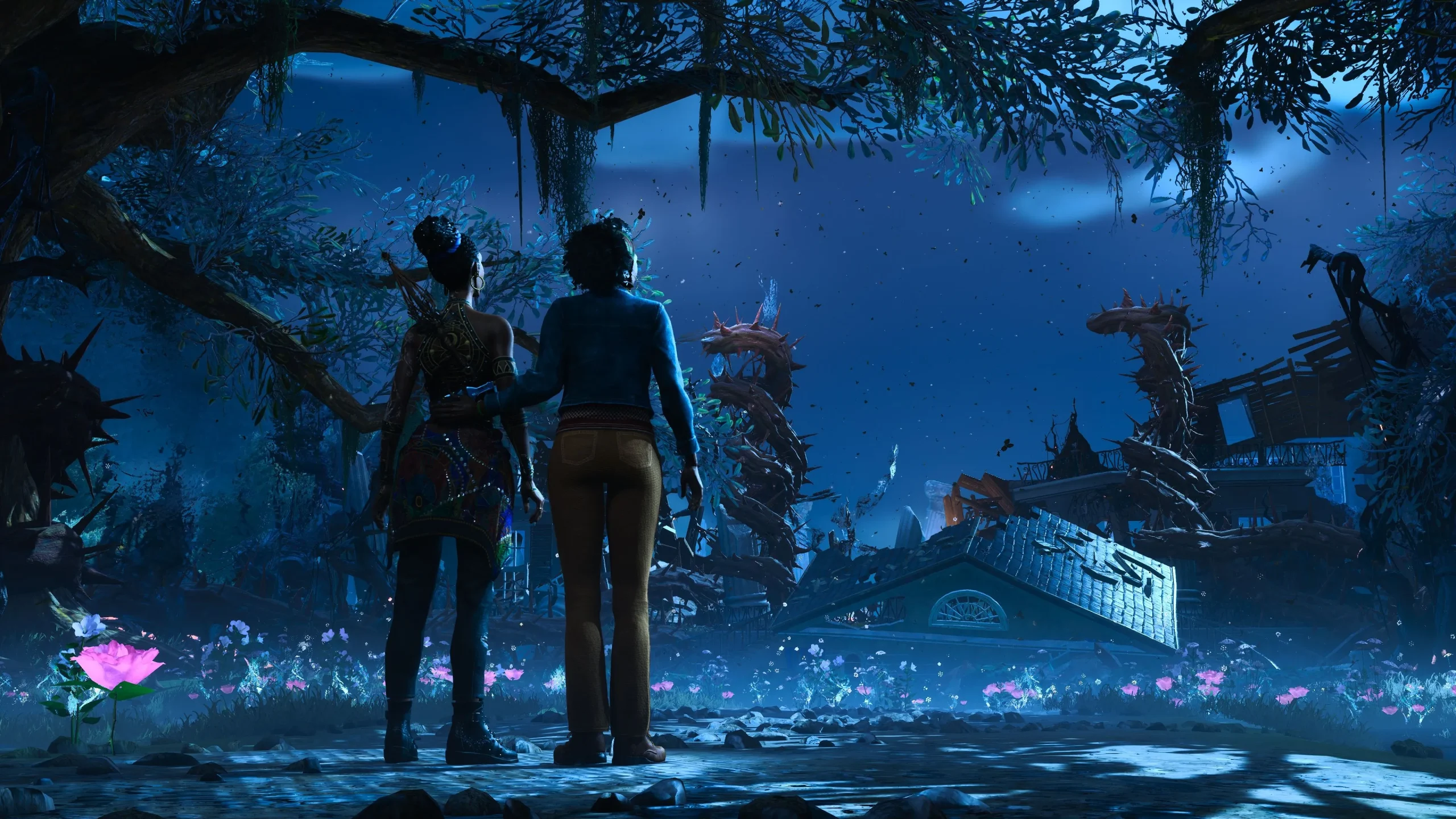
The final chapter of South of Midnight unfolds rapidly. Hazel shares a poignant moment with Lacey at the cemetery before heading to her grandmother’s mansion, now ravaged by the Stigma that Bunny has wrought. Roux previously noted that Bunny wields dark magic, which has devastated the Grand Tapestry. This dark magic stems from Bunny’s singular obsession: resurrecting her daughter Cherie, who tragically drowned as a toddler.
Throughout her quest, Bunny kept Cherie’s spirit imprisoned within a tree, echoing the fate of Benjy, the first mythical creature Hazel aids. Both beings are left in limbo following the tragedies inflicted upon them. When Hazel arrives at the mansion, she confronts Bunny and reveals the painfully inevitable truth: death cannot be reversed.
As Hazel attempts to guide Bunny toward healing, she insists on the necessity of change and acceptance to dispel the pain she has accumulated over the years. Bunny, tragically entrenched in her sorrow, protests, “I don’t even know what to live for anymore.”This moment leaves Hazel with only one option: to present the hairbrush, which belonged to Cherie during her infancy. As Bunny grasps the brush, Roux materializes, extending an illicit promise of reunion with her daughter, however illusory it may be.
Roux asserts that within Kooshma’s dreamy dominion, Bunny will experience a reality indistinguishable from the truth. Touched by the illusion, Bunny takes Roux’s hand, and they vanish together. The Stigma’s grip begins to decline, and with the collapse of the Flood mansion, Hazel escapes, reuniting with Lacey outside. In a reflective moment, she reads a storybook—an element that has framed each chapter—while conversing with Crouton and Catfish, symbolizing her acceptance of her newfound identity as Prospero’s Weaver and suggesting Lacey’s reunion with Laurent.
South Of Midnight’s Ending: The Necessity of Healing Through Community
Bunny’s Resistance to Moving On from Cherie’s Death

The overarching theme of South of Midnight is unmistakably focused on how grief from tragic experiences does not merely impact individuals but infects the larger community, revealing the necessity of embracing support from others to facilitate healing. Hazel’s powers serve as a gameplay mechanic through which she continually Unravels Stigma to aid those forever altered by their pasts. Various characters—Benjy, Two-Toed Tom, Laurent, and Honey with his mother—allow themselves to accept Hazel’s help, achieving a healthier understanding of their grief.
In stark contrast, Bunny becomes the story’s embodiment of refusal. Manipulated by her pain, she cannot recognize the chance for healing. Mildly confronting her actions, Hazel warns that “there is a town for folks who can’t move on.”Bunny’s misguided conviction blames others for the tragedy of her daughter, rejecting the reality that her own neglect contributed significantly to their suffering.
Rather than utilizing her resources for the betterment of the community—labeling it as undeserved—Bunny fixates on reconciling an impossible loss. The contrast between her and Lacey reveals the latter’s commitment to altruism. Initially frustrated with her mother’s dedication to helping others, Hazel gradually learns of Lacey’s selflessness, ultimately fostering a relationship that Bunny was unable to cultivate due to her overwhelming grief.
One of the game’s most striking lines imparted by Roux encapsulates this dilemma: “There’s a fine line between mercy and justice, ain’t that right, Hazel Flood? You chose a hard road for yourself.” To which Hazel responds, “I know.”This highlights the complexity therein—Bunny’s departure to the Town in the Tapestry offers a twisted form of mercy; it liberates her from her anguish despite its deceptive nature. This act simultaneously serves as a form of justice for the community she has wronged, ensuring that others no longer endure the consequences of her selfish pursuits.
Hazel aspires to mend the rift with Bunny in hopes of alleviating the Stigma that plagues their community. Despite Bunny’s unwillingness to accept help, Hazel embodies altruism by extending a mercy that, albeit false, provides reprieve from suffering. While she could have sought vengeance against those who perpetrated injustices—Rhubarb for his abuse of Benjy, or even Huggin’ Molly for her role in child abduction—Hazel discovers that each narrative possesses multiple facets. Tragically, Bunny remains solely anchored in her heartbreak, unable to embrace transformation.
In juxtaposition to Bunny’s fate under Kooshma’s control, which signifies perpetual entrapment by her sorrows, Hazel and Lacey emerge as figures of resilience, willing to endure hardship to afford others the opportunity to transcend their grief.
